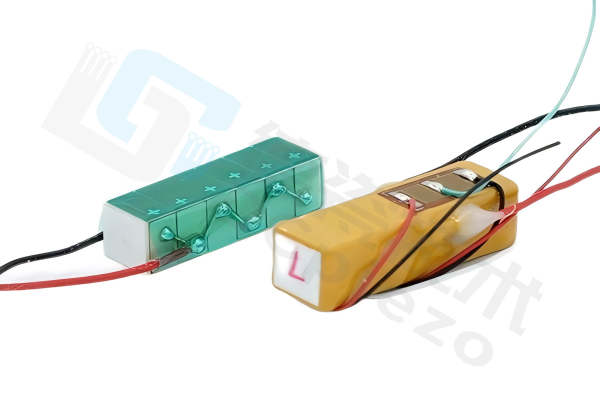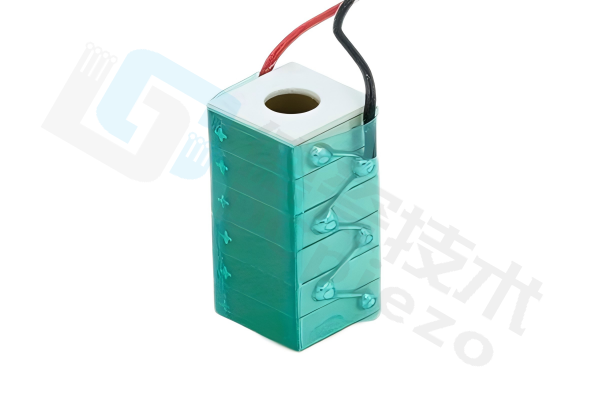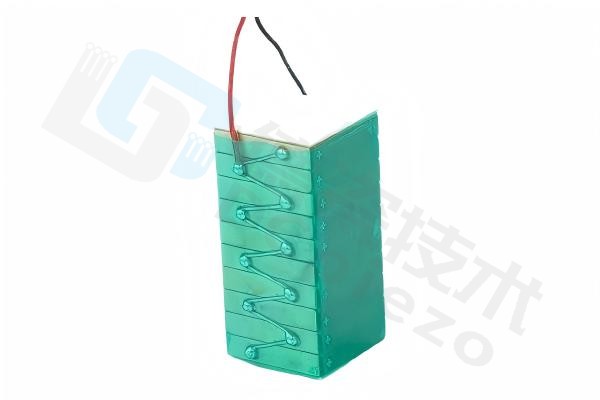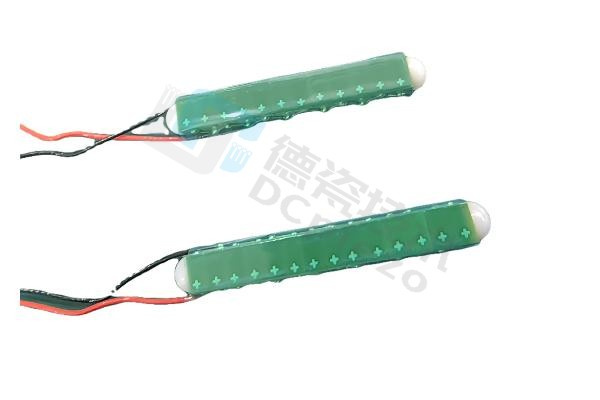Multilayer Stack Piezoelectric Ceramics: A New Breakthrough in Energy Conversion
In today's rapidly advancing technological era, the demand for precision control, efficient energy conversion, and miniaturized actuation is becoming increasingly critical. From nanoscale biological cell manipulation to industrial automation on a macro scale, from precision optical adjustment to cutting-edge aerospace technology, a core smart material—piezoelectric ceramics—plays an indispensable role. Among them, multilayer stack piezoelectric ceramics stand out with their exceptional performance, representing a major breakthrough in piezoelectric technology and redefining the boundaries of high-precision actuation and energy conversion.

I. From Principle to Innovation: What Are Multilayer Stack Piezoelectric Ceramics?
To understand the revolutionary nature of multilayer stack technology, we must first revisit the fundamental principle of the piezoelectric effect. This effect refers to the ability of certain ceramic materials (such as lead zirconate titanate, PZT) to generate an electric charge under mechanical stress (direct piezoelectric effect) or to produce minute deformation or displacement under an external electric field (inverse piezoelectric effect). Traditional piezoelectric ceramic components are typically monolithic structures, offering limited displacement under an electric field—usually around one-thousandth of their size—and requiring high driving voltages (hundreds to thousands of volts), which greatly restricts their application in modern precision equipment.
Multilayer stack piezoelectric ceramics emerged as a solution. This is not merely a material improvement but an ingenious structural design revolution. The core concept involves stacking dozens or even hundreds of extremely thin piezoelectric ceramic layers (each as thin as tens of micrometers) alternately with internal electrodes, followed by co-firing to form a robust monolithic structure.
The brilliance of this design lies in:
1.Significantly Reduced Driving Voltage: All ceramic layers are electrically connected in parallel. When a driving voltage is applied, each layer experiences the same voltage. Thus, to achieve the same electric field strength (E = V/t, where t is the single-layer thickness), the required total driving voltage (V = E * t * n, where n is the number of layers) can be reduced to tens to over a hundred volts, making it fully compatible with modern semiconductor low-voltage driving technology.
2.Remarkably Increased Displacement Output: Under the same voltage, the total displacement of the stack is the sum of the微小 displacements of each individual layer (ΔL_total = n * ΔL_single). This allows it to provide displacement output an order of magnitude greater than traditional piezoelectric ceramics while maintaining high response speed, delivering substantial thrust and energy density.
3.Higher Energy Density and Response Speed: The stack structure offers higher stiffness and resonant frequency, enabling rapid responses on the microsecond or even nanosecond scale and the ability to withstand larger loads.

II. Core Technology and Process: The Pinnacle of Precision Manufacturing
As a professional piezoelectric ceramic manufacturer, we understand that producing multilayer stack piezoelectric ceramics is a technology-intensive process, and their performance directly depends on the quality of materials and manufacturing techniques.
1.Ultra-Fine Powder Preparation: High-purity, ultra-fine-grained PZT powder with precise stoichiometric ratios is the foundation. We employ advanced chemical synthesis methods (e.g., sol-gel) to ensure the powder exhibits excellent sintering activity and piezoelectric properties.
2.Tape Casting and Precision Lamination: Ceramic powder is mixed with binders, plasticizers, etc., to form a uniform slurry, which is then shaped into green tapes with consistent thickness and smooth surfaces via precision tape casting machines. Automated equipment is used to precisely alternate and stack the green tapes with internal electrodes (typically silver-palladium alloy), ensuring alignment accuracy.
3.Isostatic Pressing and Co-Firing Technology: The laminated green body undergoes cold isostatic pressing (CIP) to eliminate interlayer gaps and enhance bonding strength. It is then sintered in a high-temperature furnace through precise co-firing. This is the most critical and challenging step, requiring exact control of the sintering curve to achieve perfect integration of ceramic layers and internal electrodes despite differing shrinkage rates, avoiding delamination, cracking, or electrode material diffusion.
4.Polarization and Aging Treatment: The sintered component is polarized under a strong DC electric field to activate its piezoelectric properties. This is followed by strict aging treatment to ensure high stability and long-term performance reliability.
Every step of the process embodies our technical expertise and relentless pursuit of quality. Only through such meticulous efforts can we produce multilayer stack piezoelectric ceramic products with low loss, high reliability, and long service life.

III. Broad Applications: Enabling High-Tech and Industrial Innovation
The exceptional characteristics of multilayer stack piezoelectric ceramics make them a "core dynamic component" in numerous high-tech fields:
● Precision Positioning and Nano-Manipulation: As core components of scanning probe microscopes (SPM) and atomic force microscopes (AFM), they enable atomic-level precision scanning and manipulation. In applications such as optoelectronic packaging, chip alignment, and biological cell injection, they provide irreplaceable nanoscale motion solutions.
● Active Vibration Damping and Noise Control: Used in precision machine tools, optical platforms, and aerospace smart structures, they actively counteract external vibrations and noise by generating counter vibrations in real time, ensuring extreme stability and accuracy of equipment.
● Fuel Injection Systems: In modern common-rail diesel and direct-injection gasoline engines, piezoelectric ceramic injectors respond faster and offer more precise control than traditional solenoid valves, enabling multiple accurate injections, significantly improving fuel efficiency, and reducing emissions.
● Optics and Photonics: Applied in rapid laser beam stabilization, fast focusing of optical lenses (e.g., smartphone camera OIS), signal switching and modulation in fiber optic communications, and wavefront correction mirror driving in adaptive optical systems.
● Ultrasonic Technology and Healthcare: As the core of ultrasonic transducers, they are widely used in medical ultrasound imaging , industrial non-destructive testing, ultrasonic cleaning, and ultrasonic scalpels, where high electro-acoustic energy conversion efficiency is critical.
● Microfluidics and Valve Control: Used to drive micro pumps and valves in microfluidic chips, enabling precise control of picoliter-level liquids, playing a significant role in biochemical analysis and pharmaceutical research.

IV. Future Outlook and Our Commitment
With the rapid development of the Internet of Things (IoT), artificial intelligence (AI), precision medicine, and advanced manufacturing, the demand for smart actuation and sensing components will only continue to grow. In the future, multilayer stack piezoelectric ceramics will evolve toward greater miniaturization, higher power density, lower power consumption, lead-free (eco-friendly) materials, and deeper integration with MEMS (Micro-Electro-Mechanical Systems) technology.
As an active participant and driver in the industry, Guangdong Deci Technology is committed to the technological R&D and manufacturing of multilayer stack piezoelectric ceramics. We possess advanced production lines, comprehensive testing equipment, and an experienced R&D team, enabling us to provide customers with a range of high-performance, high-reliability product solutions, from standard to customized offerings.
We believe that multilayer stack piezoelectric ceramics are not only a breakthrough in energy conversion but also a bridge connecting the micro and macro worlds, empowering the future of smart technology. We look forward to collaborating with partners from various fields to explore the limitless possibilities of this remarkable material and drive innovative futures with precision technology.
Contact us to learn more about our products and technical expertise.
